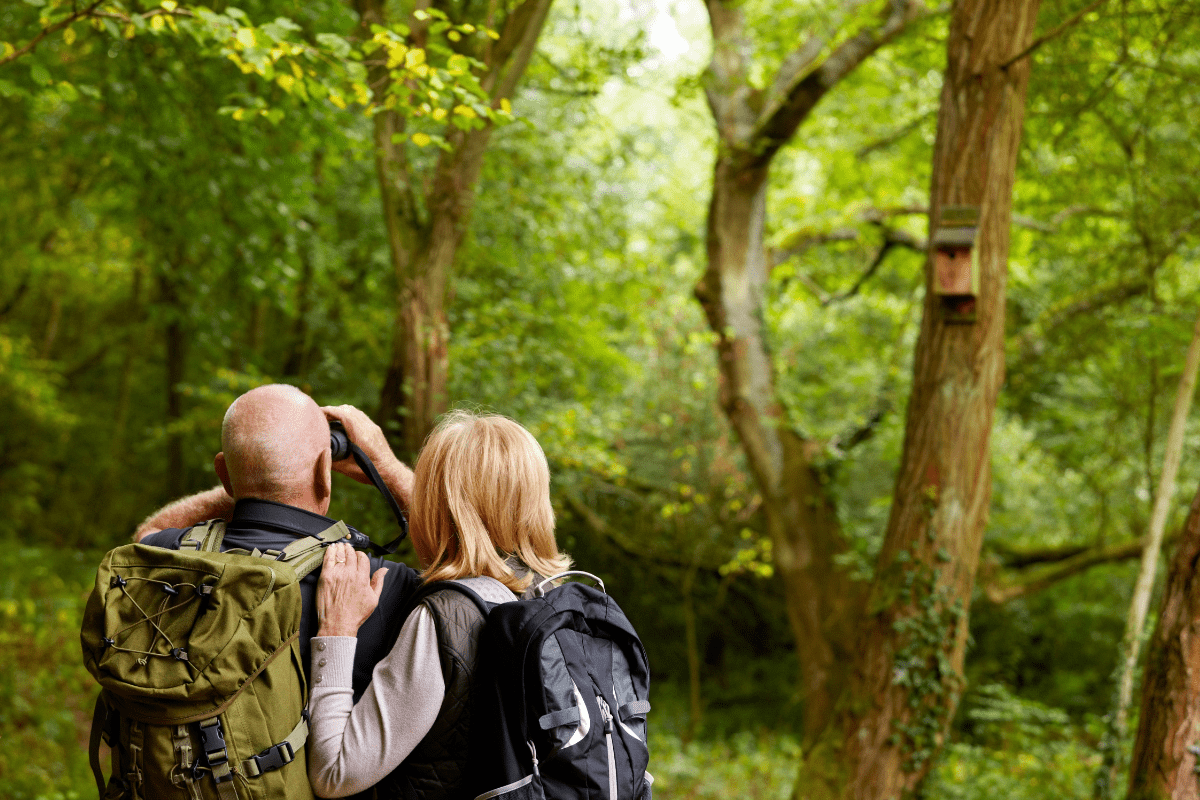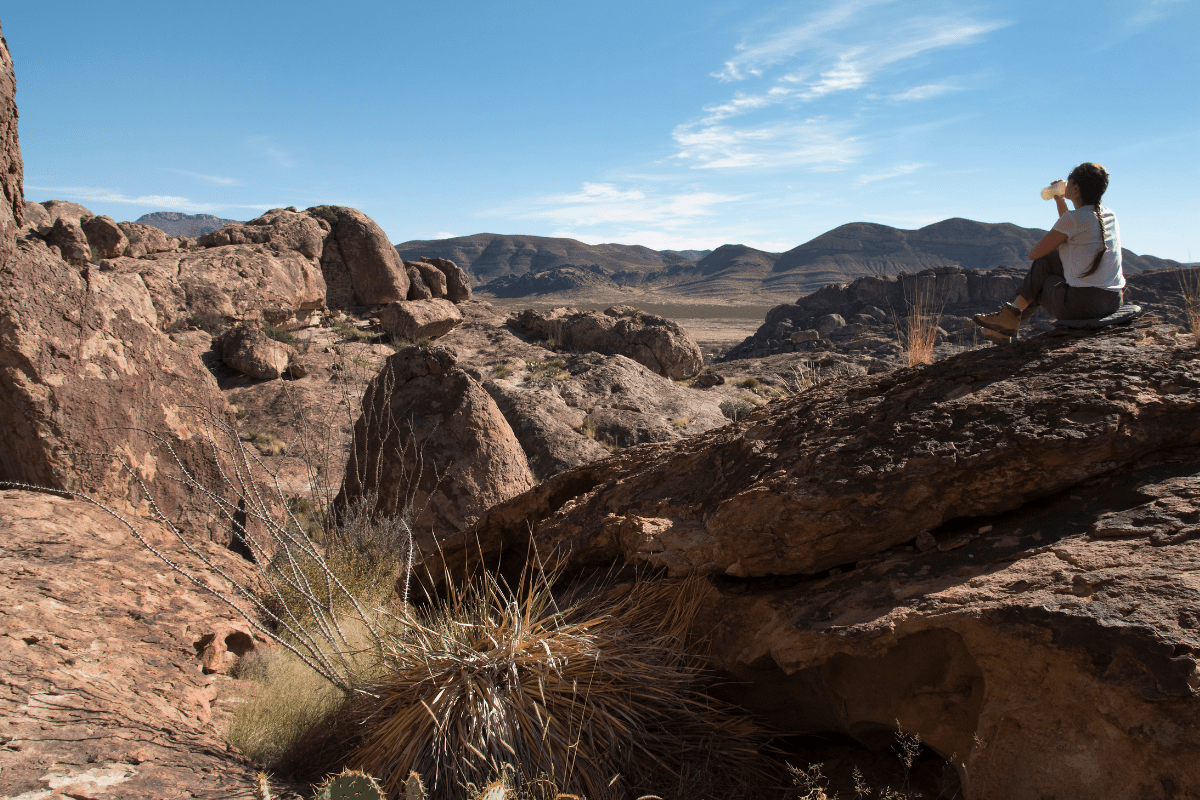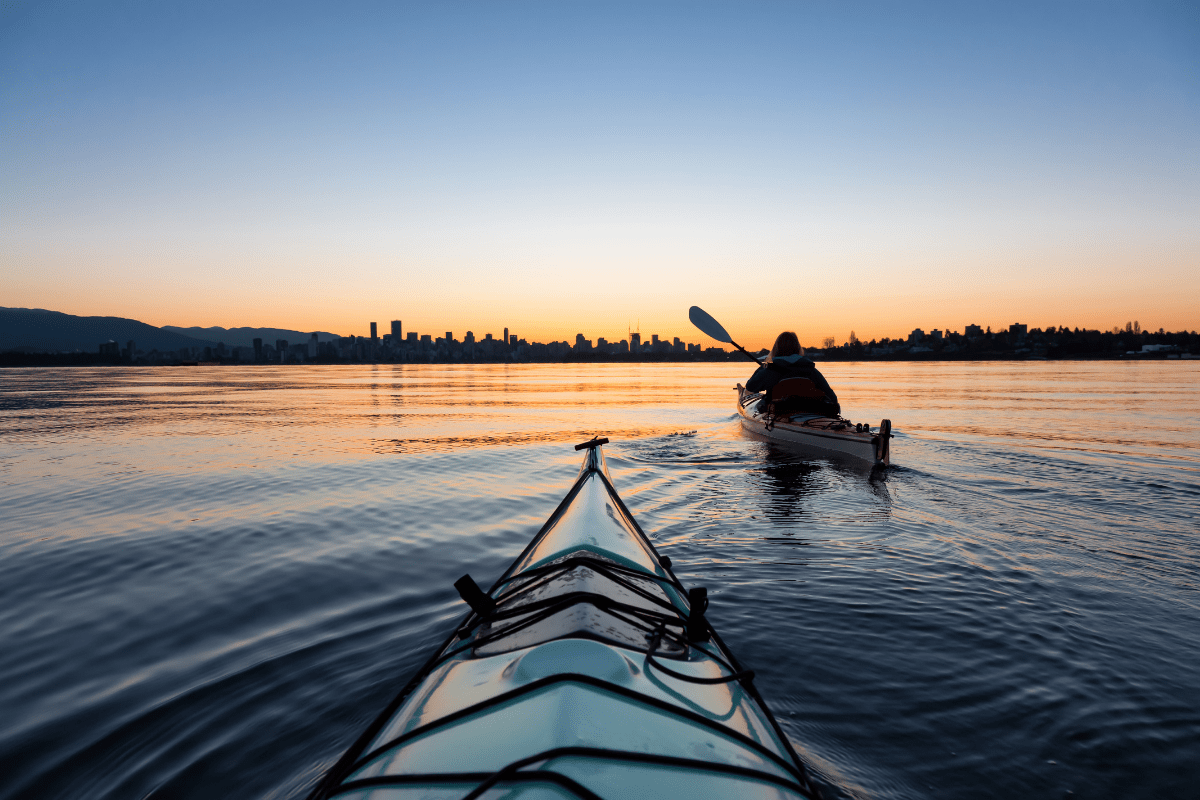Ever watched 500 whooping cranes wake up at sunrise, their prehistoric calls echoing across a Texas marsh? How about spotting a mountain lion that just traveled 138 miles through Dallas suburbs, or photographing desert bighorn sheep against a Big Bend sunset? Texas delivers wildlife encounters that'll make your Instagram followers think you've been on safari in Africa, except you never left the country.
Why Texas Is North America's Wildlife Viewing Powerhouse
The secret to Texas's wildlife supremacy lies in its position at the crossroads of two major migratory flyways. When the Central and Mississippi flyways converge over the Lone Star State, they create a natural funnel that channels millions of birds through Texas skies. During peak spring migration in late April and early May, over 5.8 million birds can cross Texas in a single night. That's not a typo. Five point eight million. In one night.
This convergence, combined with Texas's wildly diverse ecosystems spanning from the Chihuahuan Desert to coastal marshes, creates viewing opportunities that rival anywhere on the continent. The state's wildlife scene stays remarkably dynamic too. Just in late 2024, biologists tracked a mountain lion as it traveled 138 miles in 47 days through North Texas suburbs. Meanwhile, white-tailed deer populations exceed 1.5 million in the Edwards Plateau alone. Whether you're into rare birds, big mammals, or colorful butterflies, Texas has something that'll make you forget to put down your binoculars.
Coastal Texas: Where Whooping Cranes Rule
The Texas coast serves as ground zero for North American bird migration, and no place showcases this better than the legendary refuges dotting the shoreline.
Aransas National Wildlife Refuge
If whooping cranes had a capital city, it would be Aransas National Wildlife Refuge. This 115,000-acre preserve on the Blackjack Peninsula hosts the entire wild population of whooping cranes every winter. We're talking about 500-plus birds that stand five feet tall and sound like something out of Jurassic Park. The best viewing runs from November through March, with December through February bringing peak crane concentrations as they feast on blue crabs in the coastal marshes.
The refuge's 16-mile auto tour loop features strategically placed observation towers that put you at eye level with these magnificent birds. Beyond the famous cranes, Aransas hosts over 400 bird species total. You might spot a hot-pink Roseate Spoonbill doing its awkward feeding dance, watch a Crested Caracara (Mexico's national bird) strutting across a field, or photograph an American Oystercatcher probing the mudflats with its ridiculous orange bill.
Entry costs just $3 for individuals or $5 for a car full of nature nerds, and the refuge stays open from sunrise to sunset daily. The Heron Flats Trail offers wheelchair-accessible boardwalks for those who need them, while more adventurous souls can explore backcountry trails searching for alligators sunning themselves or bobcats slinking through the brush.
Laguna Atascosa: The Ocelot's Last Stand
Drive south to Laguna Atascosa National Wildlife Refuge near Harlingen, and you'll find yourself in the record books. This refuge has documented 417 bird species, more than any other National Wildlife Refuge in the country. But the real stars here sport fur instead of feathers. Laguna Atascosa protects 30 to 35 endangered ocelots, making it one of the last places in the United States where these spotted cats still prowl.
The 14.2-mile Steve Thompson Wildlife Drive winds through diverse habitats where tropical meets temperate. November brings over 250,000 ducks to the refuge's wetlands, creating scenes that look like someone spilled feathers across the landscape. This is also where birds like the Green Jay, Altamira Oriole, and Great Kiskadee reach their northern limits. These tropical species turn every visit into a mini-vacation to the tropics, complete with birds that look like they raided a crayon box.
South Padre Island's Viewing Tower
For those who prefer their wildlife viewing with a side of comfort, the South Padre Island Birding and Nature Center delivers. The five-story observation tower gives you a bird's eye view of 43 acres of wetlands, while the three-quarter-mile boardwalk keeps your feet dry as you explore. The center maintains over 50 rescued American alligators in their sanctuary, guaranteeing gator sightings even on slow wildlife days.
Spring migration from March through May brings spectacular diversity to the island, with 350-plus bird species recorded here. At $5 for adults and $3 for seniors, it's cheaper than a movie ticket and way more entertaining than watching CGI explosions.
Santa Ana's Butterfly Bonanza
Despite covering just 2,088 acres, Santa Ana National Wildlife Refuge packs more biodiversity per square foot than almost anywhere in North America. Half of all U.S. butterfly species have been documented here. That's over 300 types of butterflies in an area smaller than many Texas ranches. October through December brings peak butterfly diversity, when the refuge looks like a living kaleidoscope.
The refuge sits at the convergence of temperate and tropical zones, creating unique viewing opportunities for Mexican species rarely seen elsewhere in the United States. Hook-billed Kites, Clay-colored Thrushes, and other birds with names that sound made-up actually exist here. Plus, the refuge offers free admission on the first Sunday of each month, making it perfect for budget-conscious nature lovers.
Hill Country: Home of Endangered Warblers
Central Texas's rugged hills and hidden canyons create specialized habitats that support some of North America's rarest birds.
Balcones Canyonlands National Wildlife Refuge
Northwest of Austin, Balcones Canyonlands National Wildlife Refuge protects 27,000 acres of prime real estate for two endangered songbirds with very specific tastes. The Golden-cheeked Warbler insists on mature Ashe juniper forests for nesting, while the Black-capped Vireo prefers shrubland that looks like someone forgot to mow for a few years.
The refuge offers three public access areas, all with free admission:
- Warbler Vista with 4 miles of trails
- Sunset Deck overlooking Lake Travis
- Doeskin Ranch featuring 5 miles of varied terrain
Visit during early morning hours from March through July for the best chance of hearing the Golden-cheeked Warbler's distinctive buzzing song. It sounds like a tiny chainsaw starting up in the trees. The birds are notoriously difficult to spot, but their songs give away their locations to patient observers.
Lost Maples' Autumn Magic
Lost Maples State Natural Area becomes Texas's version of New England from mid-October through mid-November, when bigtooth maples paint the canyons in brilliant reds and oranges. But wildlife viewers find rewards here year-round, from Golden-cheeked Warblers in spring to resident populations of gray fox, ringtail, and rock squirrel.
The park's 11 miles of trails range from easy riverside strolls to lung-busting climbs to the 2,200-foot cliff overlook. Standard state park fees of $6 per adult apply, though the popular fall season often requires advance reservations unless you enjoy being turned away at the gate.
Urban Wildlife in Austin
You don't need to leave the city to find great wildlife viewing. McKinney Falls State Park sits just 13 miles from the Texas State Capitol, offering 744 acres of Hill Country habitat. Summer Tanagers, Painted Buntings, and Green Kingfishers frequent the confluence of Onion and Williamson Creeks. The nearby Colorado River Wildlife Sanctuary provides heavily wooded trails perfect for spotting migrating warblers and wintering waterfowl.
West Texas: Land of Desert Giants
The Trans-Pecos region delivers wildlife viewing on an epic scale, with vast landscapes that make you feel appropriately small.
Big Bend National Park
Covering 1,252 square miles, Big Bend National Park encompasses entire mountain ranges and huge swaths of Chihuahuan Desert. The park's elevation ranges from 1,800 feet along the Rio Grande to 7,832 feet atop Emory Peak, creating distinct life zones that support over 450 bird species. That's more than any other national park, for those keeping score.
Desert bighorn sheep, reintroduced after local extinction, now number around 500 animals in the park. Early morning drives along the Ross Maxwell Scenic Drive or hiking the Window Trail offer the best chances for sightings. The Chisos Mountains harbor the only U.S. breeding population of Colima Warblers, making the strenuous hike to Boot Canyon a bucket-list trek for serious birders from April through September.
Mountain lions maintain a healthy population here too, with the park typically documenting 150 to 180 sightings annually. Your odds of seeing one remain slim, but knowing they're out there adds an electric feeling to every hike.
Davis Mountains State Park
For a more accessible mountain experience, Davis Mountains State Park delivers spectacular wildlife viewing with the bonus of comfortable lodging at the historic Indian Lodge. The park's elevation between 5,000 and 6,000 feet creates a sky island effect, supporting species like Montezuma Quail and Mexican Jay alongside desert specialists.
The park's bird blind, dubbed "the best little bird blind in Texas," attracts steady streams of birds to feeders and water features. It's basically dinner theater for bird nerds. The five-mile Skyline Drive offers spectacular views and frequent wildlife sightings, particularly during the cooler morning and evening hours.
Guadalupe Mountains' Hidden Treasures
North of Big Bend, Guadalupe Mountains National Park protects another sky island ecosystem supporting 60 mammal species including elk. Yes, elk in Texas. They often descend to lower elevations during winter months, creating surreal scenes of bugling elk against desert backdrops.
McKittrick Canyon, famous for fall colors, also provides excellent birding with 289 species recorded. The reliable water at Manzanita Spring attracts wildlife year-round, making it a productive spot for patient observers willing to sit quietly and wait.
East Texas: Where Gators Lurk
The piney woods and mysterious swamps of East Texas feel like a different planet compared to the state's western deserts.
Caddo Lake's Prehistoric Atmosphere
Straddling the Texas-Louisiana border, Caddo Lake protects the world's largest cypress forest. Spanish moss drapes from ancient bald cypresses rising from dark water, creating an atmosphere straight out of a creature feature. This ethereal landscape provides perfect habitat for wood ducks, prothonotary warblers, and river otters.
The state park offers canoe rentals for $10 per hour, letting you paddle through the maze of bayous where Anhinga spread their wings to dry and Mississippi Kites hunt dragonflies. American alligators patrol these waters, adding genuine excitement to every paddle stroke. The adjacent Caddo Lake National Wildlife Refuge protects 8,500 additional acres with the highest breeding populations of wood ducks and prothonotary warblers in the United States.
Hagerman's Waterfowl Wonderland
Up on Lake Texoma, Hagerman National Wildlife Refuge demonstrates what happens when you manage habitat right. The refuge's 11,320 acres support over 300 bird species, with winter bringing spectacular waterfowl concentrations. Canada Goose populations can exceed 7,500 birds, creating scenes that look like someone's throwing a very loud party.
Free admission and well-maintained facilities including five hiking trails and weekend tram tours make Hagerman perfect for families and serious wildlife watchers alike. The refuge's location along the Red River creates diverse habitats from bottomland hardwoods to tallgrass prairie remnants.
Photographing Texas Wildlife Like a Pro
Capturing Texas wildlife requires understanding both photographic technique and animal behavior. Forget trying to get by with your smartphone for this.
For most wildlife photography, you'll need at least a 300mm lens, though 400-600mm provides better working distances that keep both you and the animals comfortable. Modern mirrorless cameras excel in low light conditions common during prime viewing hours, while image stabilization helps when handholding these massive lenses that make you look like a wildlife paparazzi.
Camera settings vary by situation, but here are solid starting points:
- Shutter speeds of 1/500s or faster
- Apertures between f/4 and f/5.6
- ISO values from 400-1600
Always focus on the animal's eye. If the eye isn't sharp, the whole image fails, no matter how artistic you think that blurry shot looks.
Ethics Matter More Than the Shot
The "rule of thumb" test provides a quick field assessment: hold your thumb at arm's length and if you can't completely hide the animal behind it, you're too close. Back up. Texas Parks & Wildlife recommends maintaining at least 25 yards from most wildlife and 100 yards from large predators.
Never use recorded calls during breeding season, avoid photographing active nests, and resist the temptation to bait animals with food. That "perfect" shot isn't worth disrupting natural behaviors or endangering wildlife.
Staying Safe in the Texas Wild
Texas wildlife viewing requires healthy respect for both animals and environment. The state hosts four types of venomous snakes, and they don't wear warning labels.
Maintain 10-15 feet from any snake you encounter. Most bites occur when people try to handle or kill snakes, so resist the urge to play Steve Irwin.
American alligators in East Texas waters demand particular caution. These prehistoric predators can sprint 35 mph for short distances. That's faster than Usain Bolt, in case you were wondering. Keep at least 30 feet away, and immediately retreat if an alligator hisses or opens its mouth. Never feed alligators. It's illegal and conditions them to associate humans with food, which ends badly for everyone involved.
Heat presents the most consistent danger. From June through September, temperatures regularly exceed 100°F. Drink one cup of water every 15-20 minutes during outdoor activities. Watch for heat exhaustion symptoms including heavy sweating, weakness, and nausea. Heat stroke, indicated by hot red skin and confusion, requires immediate medical attention.
Planning Your Texas Wildlife Adventure
Success in wildlife viewing comes from understanding seasonal patterns and having the right tools.
Spring migration peaks from late April through early May, bringing incredible diversity. Fall migration from August through November offers another opportunity, with hawk migration particularly spectacular in September and October. Winter brings whooping cranes to the coast and concentrates waterfowl on lakes and refuges.
Essential planning resources include:
- Texas State Parks Pass ($95 annually)
- eBird app for real-time sightings
- iNaturalist for species identification
- Texas Parks & Wildlife app
Consider joining organized festivals for expert-guided experiences. The Whooping Crane Festival (February 20-23, 2025) in Port Aransas offers over 40 field trips. The Rio Grande Valley Birding Festival each November showcases tropical species at their northern limits.
Texas offers three major wildlife viewing trails that connect the best viewing locations across the state. Maps and guides help you plan multi-day adventures following migrating birds or exploring diverse habitats.
Making Your Viewing Count
Every wildlife viewing trip contributes to conservation when done responsibly. Entrance fees support habitat management, while citizen science observations through apps provide valuable population data. Recent mountain lion sightings documented through the Texas Parks & Wildlife app helped biologists track that remarkable 138-mile journey through North Texas.
Texas wildlife faces ongoing challenges from habitat loss, climate change, and disease. By following ethical viewing practices, supporting conservation organizations, and sharing knowledge with others, you become an active participant in protecting Texas's natural heritage.
Whether you're photographing whooping cranes at sunrise, watching millions of Mexican free-tailed bats emerge at dusk, or simply enjoying colorful Green Jays at a Hill Country feeder, Texas provides wildlife viewing experiences that create lasting memories. The incredible diversity, from tiny Texas kangaroo rats to massive American alligators, offers endless opportunities for discovery.
Pack your binoculars, charge your camera batteries, and prepare for adventures that showcase the wild heart of the Lone Star State. Just remember to bring plenty of water and watch where you step. Those 5.8 million birds have to land somewhere, after all.





